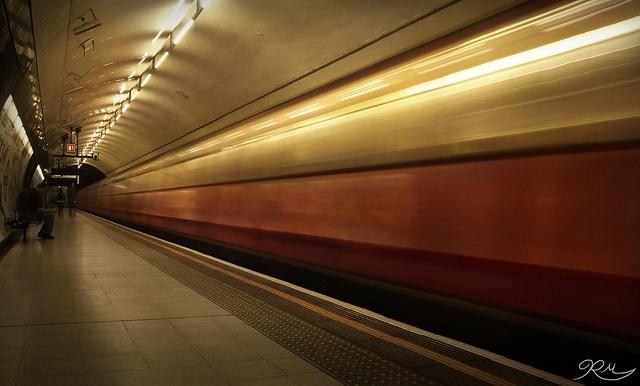
Editor’s Note: As a lead-up to Abu Dhabi Sustainability Week, Jan. 17-24, Masdar sponsored a blogging contest called “Describe the Ideal City in 2030.” The following post was a runner-up and was originally published on the Flaneur.
By Jonathan Powell
2030 sounds so far in the future that surely by then we'll all be taking time machines to work and eating calorie-free food grown on Mars. Unless we’re the abject subjects of a master race of robots that took control when laptops learned to walk and we were too busy checking Facebook to notice.
However, on sitting down to imagine the intricacies of life in this far distant time, it becomes clear that 2030 is in fact only 15 years away, which isn’t even long enough to see Halley’s comet again. So, all the really life-changing stuff – water supplied from clouds, nuclear toasters and even the self-laundering socks -- will not be yet be mainstream inventions. Sadly, the truth is this: The world of 2030 will not be radically different from that of today. Germany will still be beating England at football and "The Mousetrap" will still be playing in the West End.
So, in 2030 your phone won’t be embedded in your head, but there will be changes, particularly in large metropolises like London. Here the influence of technology will be clear – cities will be smarter, with a myriad of versions of the sensors that already find car-parking spaces for drivers on Westminster’s busy streets. Although that particular innovation won’t be much use as no one will be doing much driving.
Pedestrianization is already required in city centers and by 2030 the banishment of cars will be closer to completion. Pedestrianism will have soared, and bicycling will be the honorable way to get around. Several of the tube tunnels in London will have been handed over to make underground cycle paths, while those public transport vehicles that do run will carry more and more people, be more and more automated and have less and less staff.
These vehicles will appear very different to the buses and trains we are used to. The newest mass transit devices will owe more to horizontal elevators than internal combustion. These super-fast connections will allow people to live further away from where they need to be, and city populations will not continue increasing as quickly as expected. Housing will not have to be balanced on struts over the Thames; Hyde Park will not need to be concreted over. Things will change for the better, but when something goes wrong it will be harder and harder to actually speak to human beings.
Of course predicting the future of cities only 15 years into the future is dangerous – if only because you’ll probably be around to realize you got it all wrong. After all, some clever fellow in a shed in Norwich might discover the perfect way to make electricity out of air and post the instructions on the Internet for all to benefit. However, one thing you can be sure of: Whatever becomes popular and useful, there will be new taxes to make it more expensive. And you won’t be able to use it while you’re driving. Although that won’t be much of a problem because, of course, you won’t be driving anywhere.
Image credit: Flickr/Rose Morelli
TriplePundit has published articles from over 1000 contributors. If you'd like to be a guest author, please get in touch!














